This product walkthrough shows you how you can use the Crash Override platform to make sure that you have code owners files in all of your repos that are ‘deployed to production’.
You maybe asking why not just push a code owners file to every repo from the central org settings? The answer is quite simple. Unless you want to violently interrupt the developers existing git workflow, you would just push a blank file. This achieves nothing as you will still not know who to talk to in order to get the right policy defined in it. Using our approach you get the inferred code owners and know exactly who to talk to to get the file created with the right content.
There are two parts
- Identifying the repositories that are deployed to production
- Running a campaign to make sure that all of the code deployed to production has code owners files
You should be logged into your Crash Override account and be inside of your workplace. If you don’t have an account, contact us for a demo and we will be pleased to set you up.
Identifying the repositories that are deployed to production
With thousands and even hundreds of thousands of repos that we frequently see and hear about in big companies, many of which are just forks of each other, hack-a-thon projects, abandoned ideas, or clones of public open-source projects, you have to be able to cut out the noise and focus on what matters. Scoping your project to get code owners files for code that is deployed and running in production is a pragmatic first step.
Step 1: Navigate to the repositories view in your Catalog

Step 2: Add a filter to only show production environments and click apply
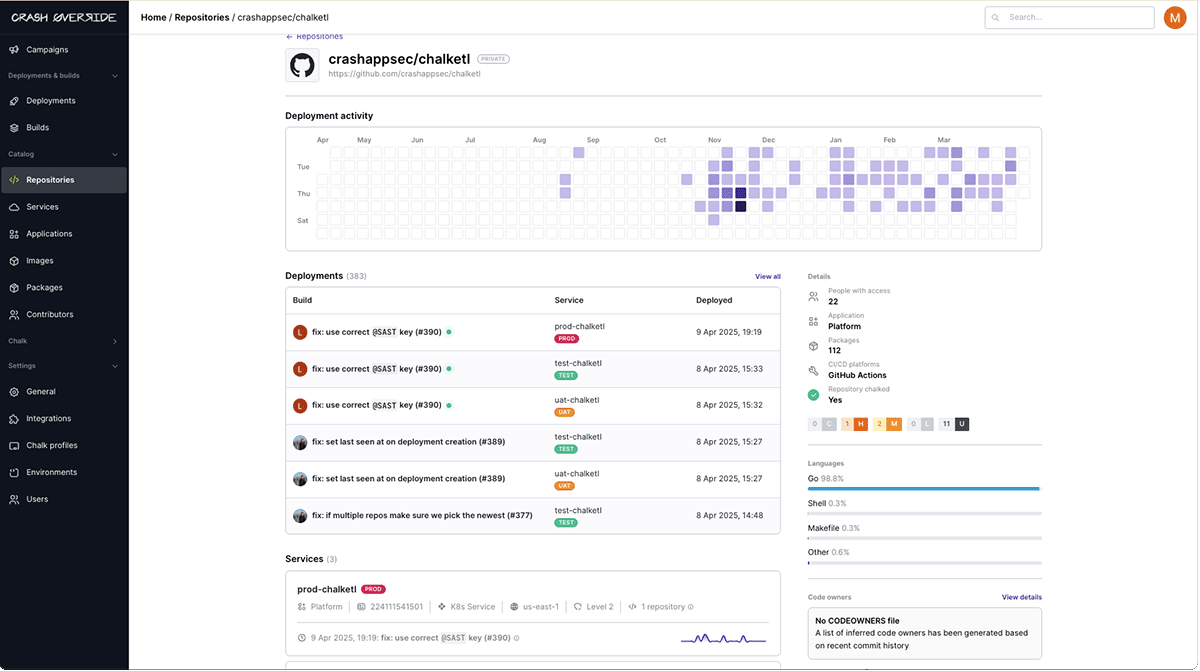
After initial setup, the platform automatically determines what is ‘in production’, updating the repo lists and associated services as it continues to run. We will deep dive into how we do this in a later article.
As you can see, there are many other filters that allow you to accurately target repositories, for instance you can target repositories in production that contain Java code or open-source packages with known vulnerabilities.
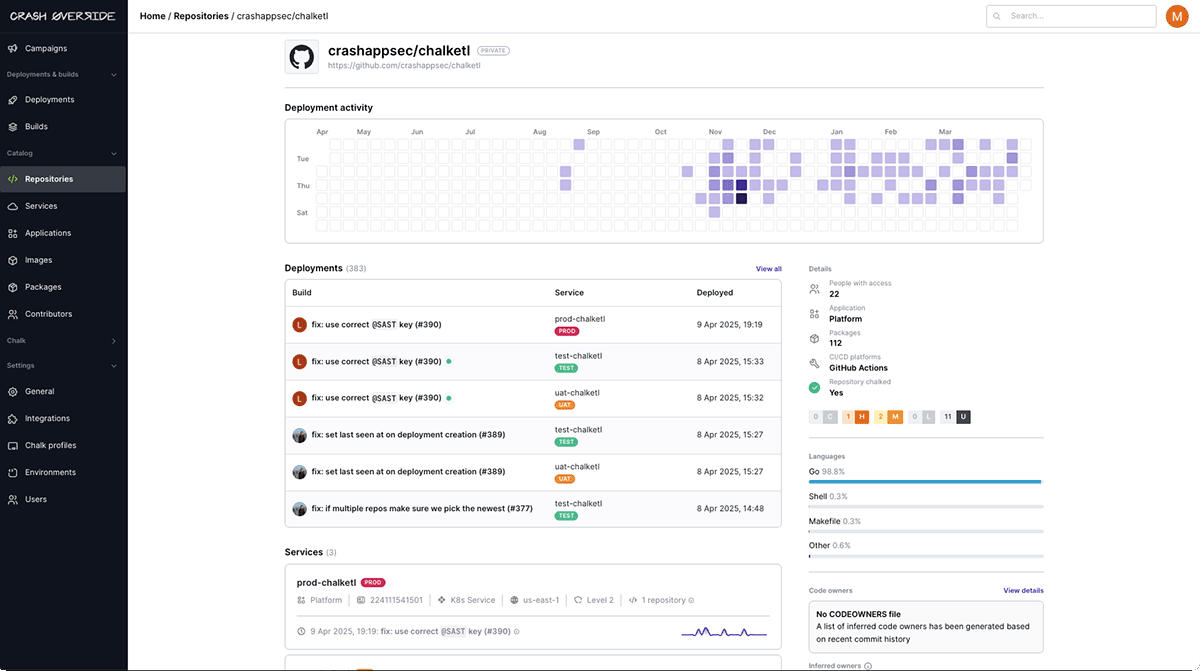
This particular repository does not have a code owners file, but we have already identified the code owners automatically using our inferred code owners technology. More about this later.
Running a campaign to make sure that all code deployed to production has code owners files
Making sure each repo has a code owners file repo by repo is not practical and so we have built a Campaigns feature that allows you to track work strategically across your organization.
Step1. From the campaigns page select the Code Owners Campaign
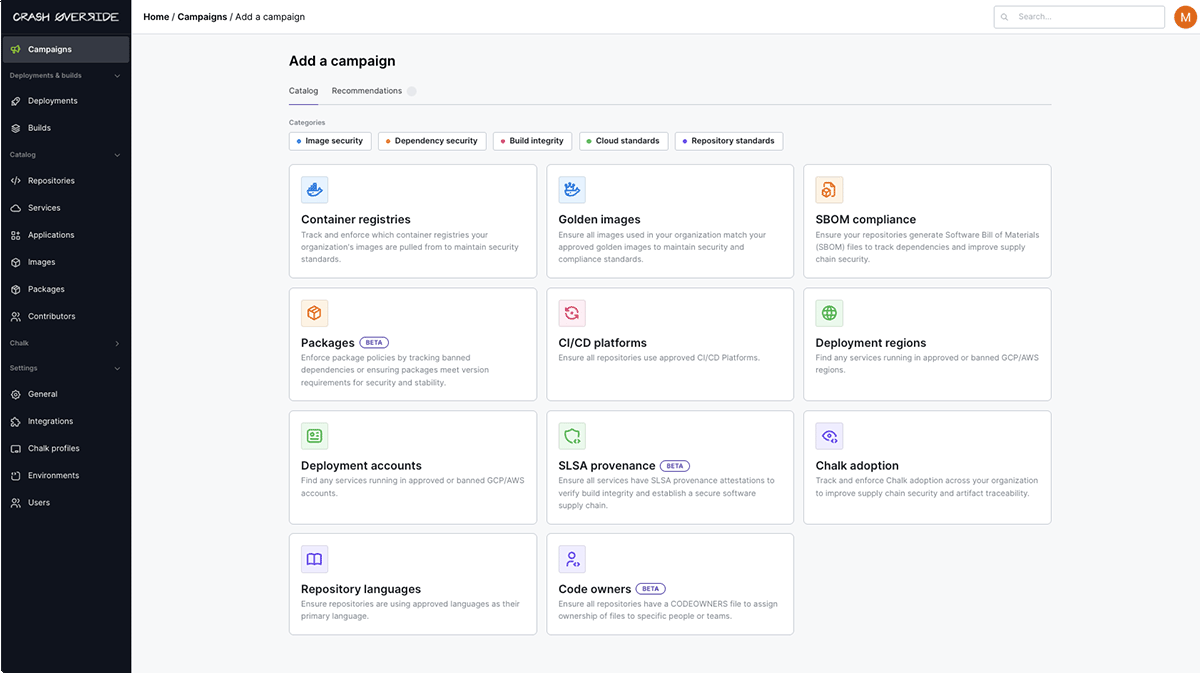
There are three steps in the wizard to follow. The first step allows you to further target the scope of the repositories.
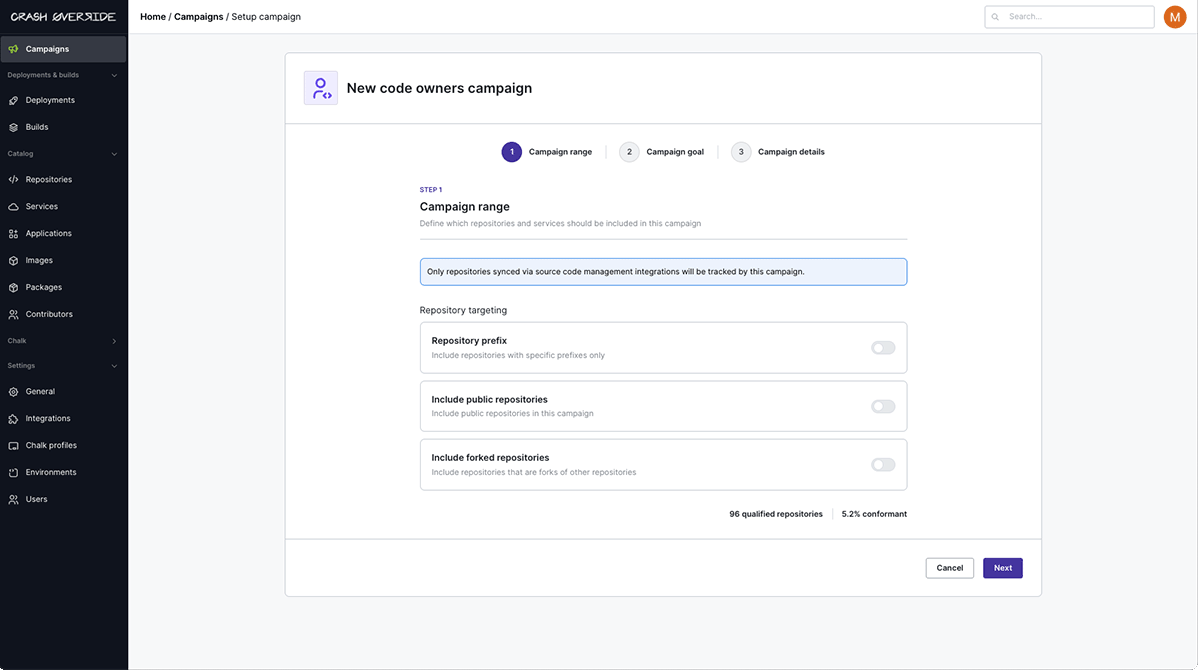
The second step lets you define a 'good state', and a target date that you want to achieve that good state. You will notice that we calculate the current compliance immediately so you can set a realistic compliance threshold and target date.

The third step is to give your campaign and name a description.

When your campaign is setup you will immediately be presented with a screen showing the campaign status, and the non-compliant repositories in a list below.
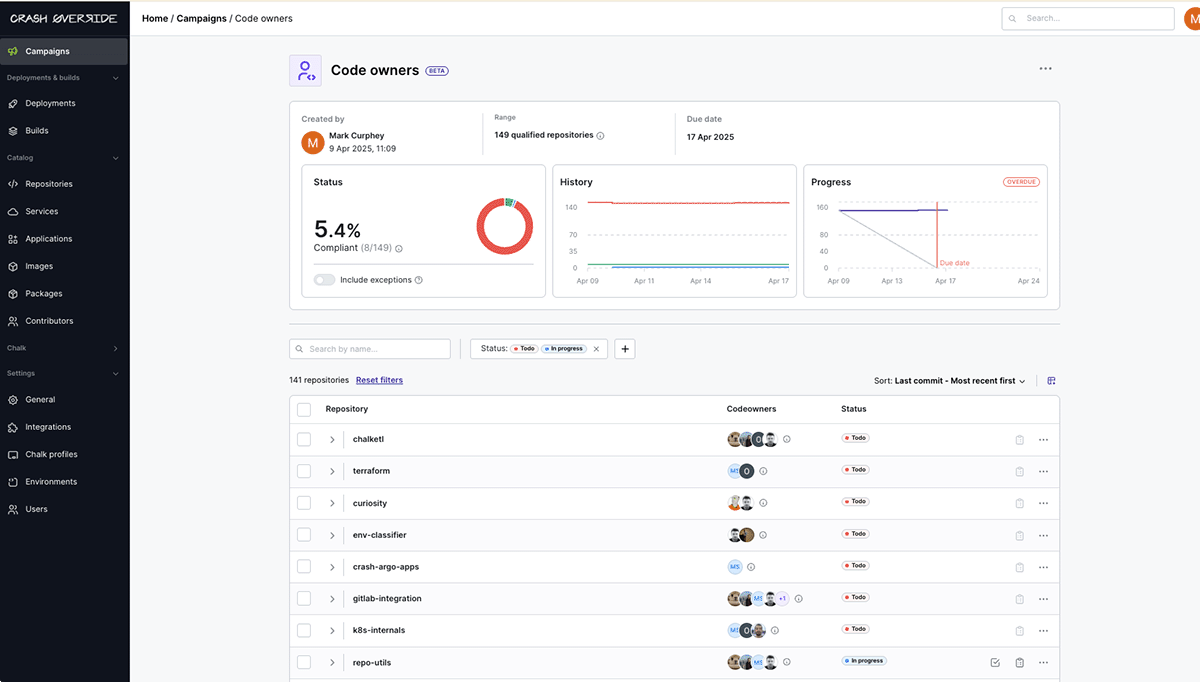
This is where a little bit of magic kicks in. Even though there is no code owners file, you will immediately know the inferred code owners for the repo. From this view you know who has worked on the repo and what they have worked on. This is not simply the commit history but our inferred code owners algorithm that will cover in a followup article.
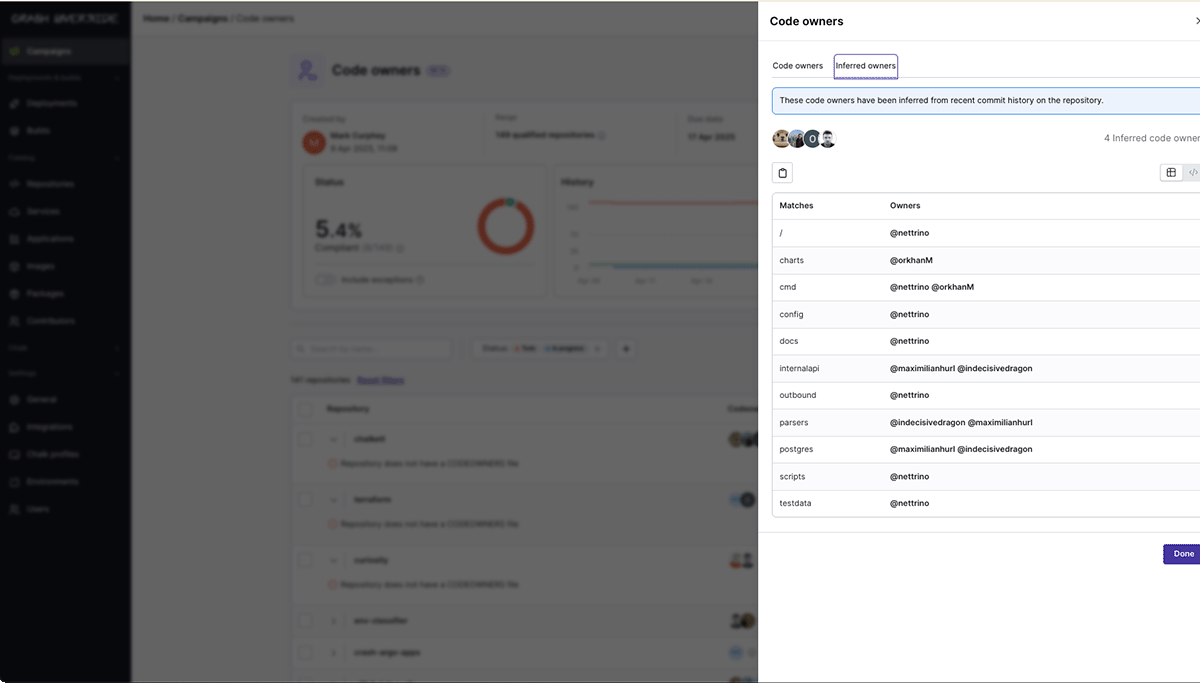
You can automatically file an issue directly to the repo asking for a code owners file to be created. We even make it easy by templating the file out, with the inferred code owners, so its zero work for the developers to add a file that provides them immediately value right out of the box.
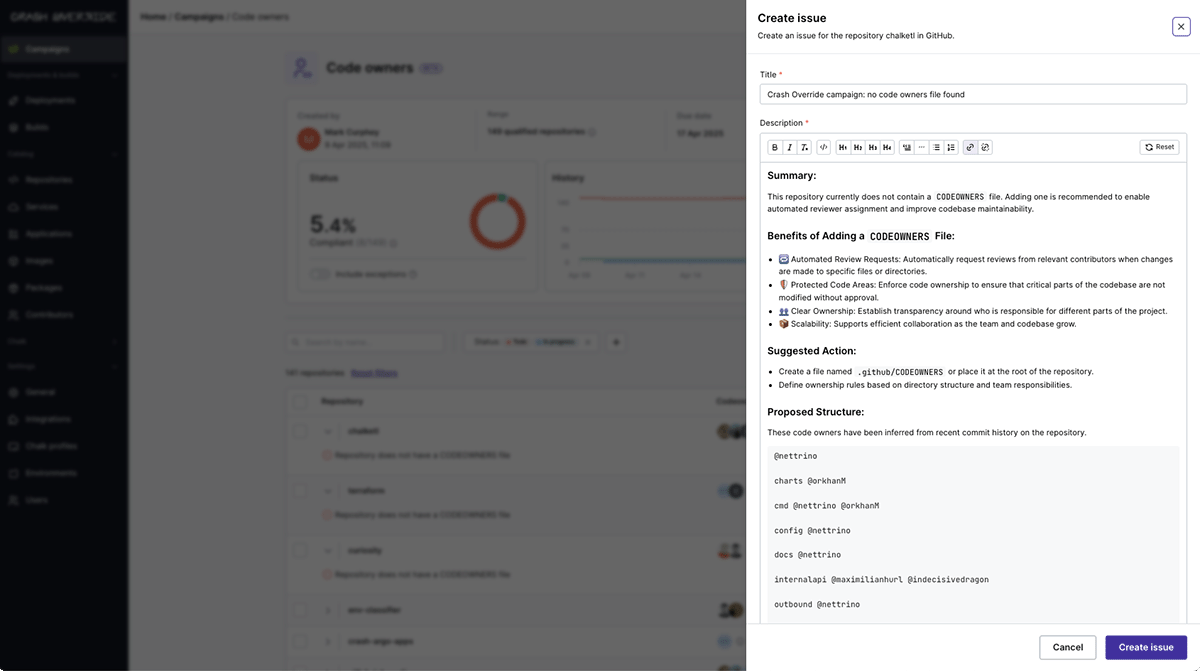
If you would like to know more, get a demo or try the platform for yourself we would love to hear from you. As we always say, we’re not going to bend your ear or twist your arm to sell you a solution you don’t need. We just loving showing people what we have and are building.
